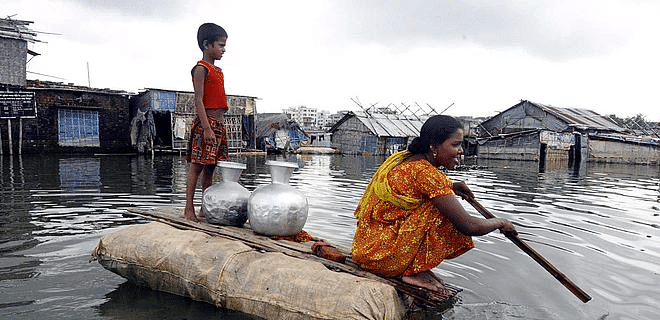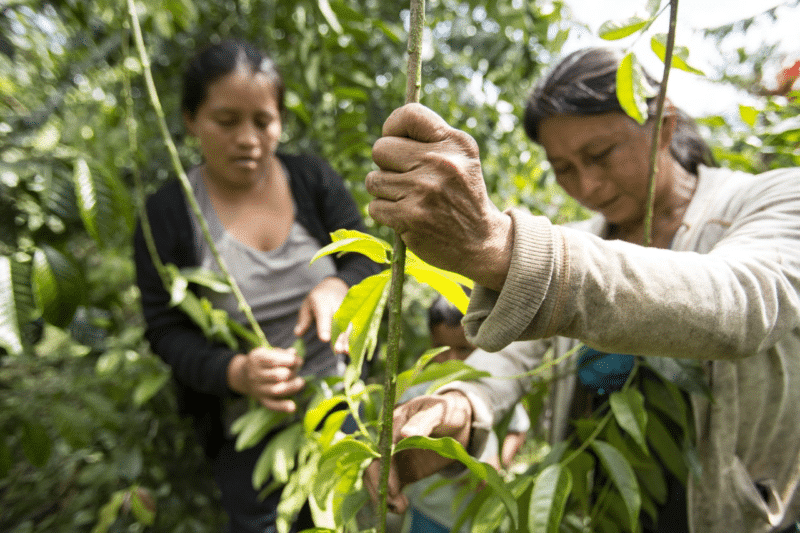
Hurricane Dorian has decimated the landscape and lives of people and families throughout the Caribbean and Antilles and across the southeastern United States. Millions of lives have been disrupted, including a staggering 70,000 newly homeless families in the Bahamas, and the death toll continues to climb.
Natural disasters, despite their seemingly indiscriminate destruction, in fact strike with specific prejudice. The poorest countries and most marginalized populations are often geographically and systemically most at risk when facing natural disasters like Dorian.
In my work with Habitat for Humanity New York City I have noticed a parallel in the populations we serve in this dense urban city to my work in disaster response with Habitat for Humanity International in areas around the globe. When it comes to affordable home preservation and construction, more than 80% of Habitat for Humanity homes are sold to families with single female heads of household. That statistic is true in New York City and around the world.
We may not think of emergency response after a disaster as specifically a women’s issue. However, when disaster strikes, higher percentages of women are affected. Studies show that women are less likely to evacuate in advance of a disaster, often because they carry the responsibility of caring for the young, the old, and people with disabilities. In some cases, women are disadvantaged in the aftermath of disaster by social and cultural traditions that can limit their mobility and stifle their influence over critical decisions such as those affecting family security.
Consequently, in the aftermath of disaster, we must remain sensitive to the fact that we are responding in large measure to women in need.
I find direction in the clarion call of Elizabeth Gilbert, author of “Eat, Pray Love” and “City of Girls,” who recently shared: “Those of us who are warm and dry and safe and well-fed must show up for those who are cold and wet and endangered and hungry. That is a rule of life. Every ethical and religious and spiritual tradition in the world agrees on that rule.” Her words are clear and true: we must show up for those who need our support.
In the face of so much need, as in the wake of Dorian, the decisions before us are how best to express our support and who to support, and, critically, when to do it.
There are four general phases of disaster response: preparedness/mitigation, relief, early recovery and reconstruction.
Preparedness is the identification of appropriate resources in advance of a disaster and planning for how these resources will be deployed when disaster strikes. Mitigation focuses on activities that could prevent—or reduce the chance of—an emergency from happening, or more broadly, reduce the damaging effects of a disaster once it occurs. Without a doubt, preparedness and mitigation play a critical role in the ability of a family or a community to react and respond when disasters strike. It is an affirmation of the old adage “an ounce of prevention is worth a pound of cure.”
Women often play a central and grassroots role in community and have greater insight into the needs of the most vulnerable groups in a community. The Global Fund for Women recommends ensuring that women are part of the decision-making process before, during, and after disasters.
The relief, early recovery, and reconstruction phases all follow the disaster and utilize a complex set of methodologies designed to address basic human needs.
The Federal Emergency Management Agency (FEMA), the American Red Cross, and The Salvation Army are examples of frontline agencies and organizations that ensure the immediate safety of those in impacted areas and set the groundwork for recovery. These first responders provide vital resources such as clean water and medicine and set the stage for a long pathway to recovery.
An important first step in disaster recovery is the establishment of shelter. The term shelter in disasters is distinct from simply, housing. The act of “sheltering” begins as soon as we wrap someone in need in a blanket or jacket for protection and continues through temporary or even rudimentary housing structures, until the displaced person or family can be reinstalled in a permanent, and ideally disaster-resilient, home. The difference is ultimately in the quality, standards, materials and overall permanence of the structure.
Specific shelter strategies differ by geography, local government and regulatory requirements, and by the amount of income and resources available to impacted families.
The full process of recovery can last weeks and sometimes years, and the organizations that provide these critical short and long-term support systems depend on the financial generosity of unaffected individuals around the world.
Financial support is critical and importantly, distinct from material goods donations. Disaster assistance-focused organizations, such as Together Rising and Habitat for Humanity International (and more can be found through Charity Navigator, which filters for highly rated organizations providing disaster assistance), already have deep and effective material delivery systems in the impacted areas. It is far more cost effective for them to directly source supplies and materials than to have to factor in the additional cost and logistics of individually donated material goods. That is why your financial support is so important, and why every dollar you might spend on canned goods or toys for affected kids, with the intention of donating, will actually go a lot further if instead you donate money directly to the organization of your choice.
If it is in your heart to volunteer, get the advance training you need with a qualified first-responder organization in your community so that you can work in concert with their efforts. While you may not be able to physically volunteer immediately, when an impacted area is in need of volunteers, your training will place you in a good position to be the most helpful. Whatever you do, do not look away. The road to recovery is very long. The impacted communities will need our help for years to come—and with increasing numbers of natural disasters; you never know when you or your loved ones might be the ones in need

Karen Haycox has been CEO of Habitat for Humanity New York City since 2015. During her career at Habitat for Humanity International, Ms. Haycox’s leadership roles included senior positions in the Carter Work Project as well as international and domestic disaster relief focused on the Asian tsunami, Hurricanes Katrina & Rita, Haiti Earthquake, Midwestern tornado outbreaks and Superstorm Sandy.


